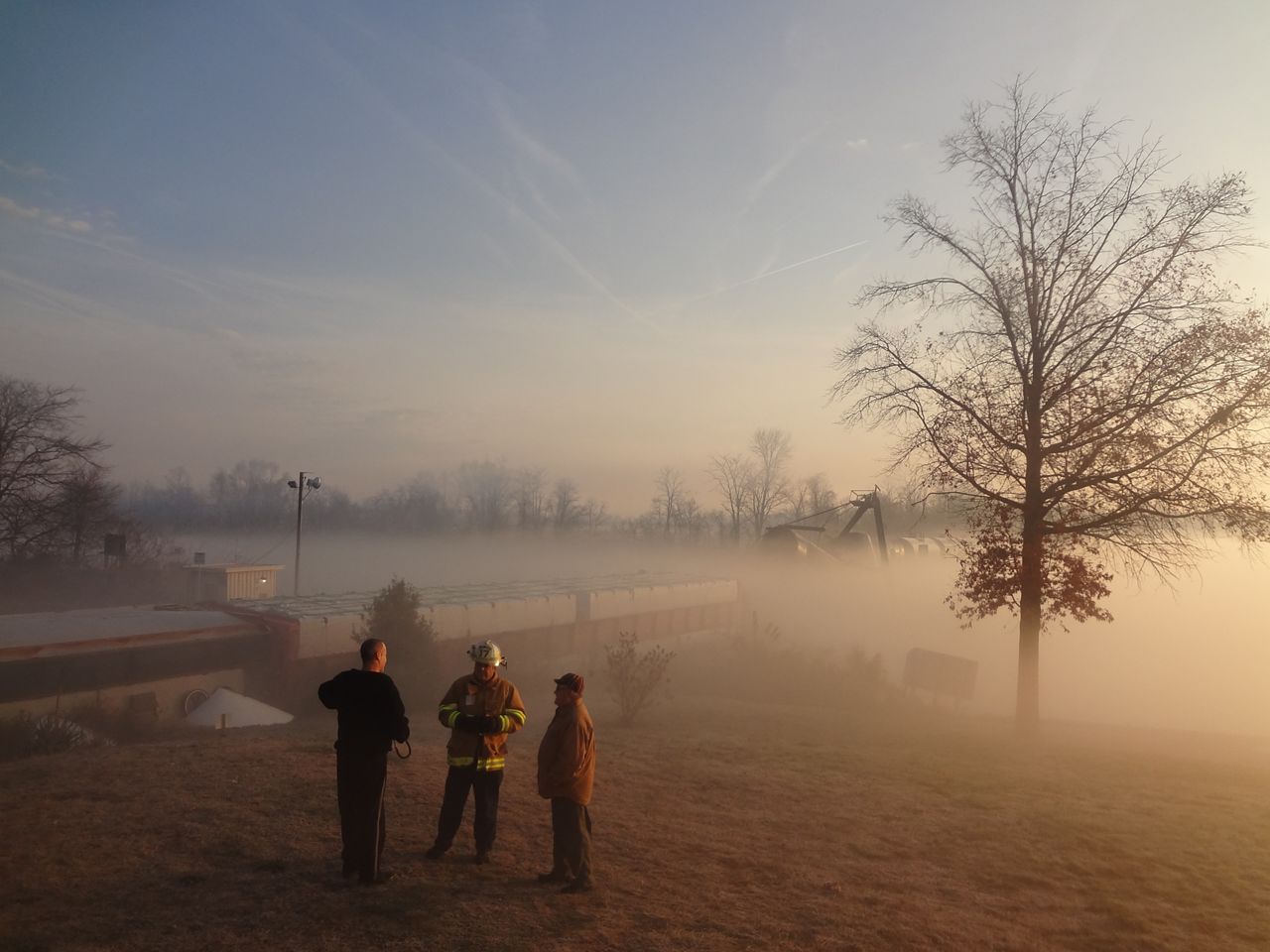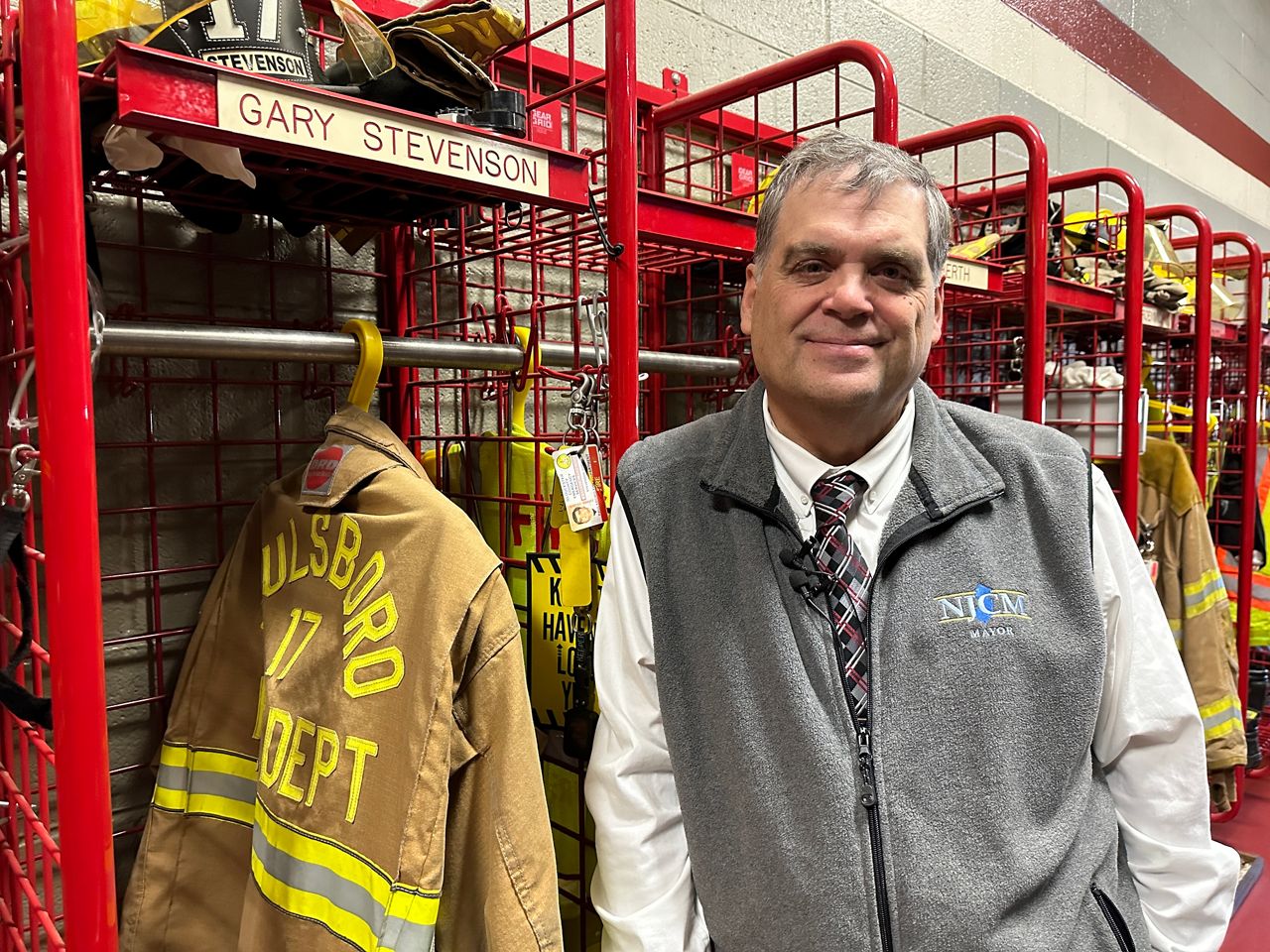PAULSBORO, N.J. — What the state of Ohio is seeing play out right now in East Palestine is not an isolated incident.
Train derailments involving toxic chemicals have caused people living in other places around the nation to go through similar traumas. One of these events occurred in 2012, in the small town of Paulsboro, N.J.
Spectrum News 1 Ohio visited this town to speak with those who lived through the derailment, to see what we can learn from their experiences more than 10 years later. One of those individuals is the town's current mayor.
A thick, eerie fog, confusion and what some have described as a bittersweet smell and taste fell over Paulsboro a little more than 10 years ago when a train derailed, releasing about 20,000 gallons of vinyl chloride.
That accident occurred just steps away from where the town's current mayor, Gary Stevenson, lived at the time. In fact, the wreck was so close that it shook his house and jolted him awake.
“And I got rocked out of the bed, literally rocked out of the bed," he said. "And I heard my wife scream.”
Stevenson said he'll never forget the toxic fog that followed the derailment on that November day.
"It got to be where you couldn’t see this," he said. "The hand in front of your face. It got that bad.”
Seeing a similar situation unfold in East Palestine, Ohio, has brought back some painful memories and re-ignited his passion for railroad safety.
“We fell asleep," he said. "The Ohio derailment woke us up to say, 'OK, what have we done? Has anything changed in 10 years? The response or anything?' You want my personal opinion? No, on the local level because we still don't have the money. We don't have the resources.”
Stevenson has lived in Paulsboro his entire life. The two-square mile town near Philadelphia is home to approximately 6,000 people. Over the years, he's served his town in a variety of positions. During the time of the derailment, he was on city council and also the deputy fire chief of the local volunteer fire department.
“I wore all of those hats," he said. "I know what it’s like to have your home wrecked, to have your health wrecked, be a first responder and get ridiculed, a governing body member. I know all that stuff.”
It was around 7 a.m. on Nov. 30, 2012, when a Conrail train derailed while travelling over the Paulsboro movable bridge. This was the original bridge, over Mantua Creek, originally built more than 100 years ago.
There were known problems with this bridge prior to the derailment. According to the NTSB report, Conrail trouble desk records show 23 bridge operating problems were reported in the year prior to the wreck, 11 in the month before.
But technicians were not able to identify any specific problems with the bridge and decided to keep it operational.
Despite a red light signal when the train was passing through, the conductor inspected the bridge and decided it was properly locked. He crossed with a dispatcher's permission, according to a National Transportation Safety Board (NTSB) report.
But the rail was not locked, and it misaligned once the train moved across the bridge. This caused it to derail.
“It happened at 7:05 in the morning," Stevenson said. "A half hour later, kids, there’s a school right over there. Kids are walking to school. Might of killed the kids.”

In total, seven cars derailed — four of which fell into the water. Of those, three were carrying vinyl chloride and one contained ethanol.
One of the vinyl chloride-carrying cars was punctured and released about 20,000 gallons of the chemical into the air and water, according to officials.
The accident saw a multi-agency response including the Coast Guard, Conrail, New Jersey State Police Office of Emergency Management, New Jersey EPA, the Paulsboro Volunteer Fire Department, the Paulsboro Police Department and NTSB.
Stevenson said he remembers a chaotic scene and felt no one knew initially what they were dealing with or the proper way to respond.
He established the initial incident command post at his home, which was only about 50 yards from the wreck site.
“[There was] confusion on is it fog," he said. "Is it vinyl chloride? Is it a combination of both? Is it in the water? Is it on fire that we can’t see?”
Not including the train crew and emergency responders, 28 residents sought medical attention for possible exposure to vinyl chloride, according to the NTSB report.
As many as 680 people were evacuated from their homes, and some health effects have lingered. Stevenson now has trouble breathing.
“I didn’t realize it was all vinyl chloride the whole time, and my readings were 20-, 30-, 40-, 50-times worse than anybody else’s when I got tested," he said.
The chemical is a known human carcinogen, and exposure to the flammable, colorless gas has been linked to symptoms ranging from nausea, headaches, irregular heartbeats, difficulty breathing and neurological issues.
The National Advisory Committee for the Development of Acute Exposure Guideline Levels for Hazardous Substances reported on the day of the wreck, the concentration levels of vinyl chloride showed the general population could experience “irreversible long-lasting adverse health effects” and even “life-threatening health effects or death.”
Stevenson said he spent 18 hours a day for weeks at the site during the clean-up, and he recalled a conversation with a doctor.
"'I guarantee in 10, 15 years you’re going to start experiencing condition changes,' he says," Stevenson said. "He did a little research on it and all, and in the last year or so, I have problems breathing a lot.”
Stevenson drove Spectrum News 1 Ohio around his hometown, to show us a little bit of Paulsboro's history and to give a lay of the land of his community.

He took Spectrum News to the Paulsboro Volunteer Fire Hall, which became the initial information hub for those who were evacuated more than 10 years ago. It was also the site for NTSB press conferences and where people could receive vouchers for food, clothing and hotel stays.
“There were fights and arguments because on this side of the street they said has to be evacuated, but on the opposite side of the street no," Stevenson said. "And why? Why not? I mean, you eventually had to have a cutoff point. It got messy here. It got messy.”
At the time of the derailment, the volunteer fire department had fewer than 15 firefighters. Stevenson said a lack of training on responding to train derailments with hazardous chemicals left first responders improperly protected.
He said none of the gear was replaced after exposure to chemicals from the wreck.
“We just put it through a big washer and washed it with certain detergents they recommended to us," he said. "Why? Because we can’t afford it. This gear now is probably $5,000 a set.”
As he drives around town today, though, he said the changes Paulsboro has seen over the years can't be directly tied to the derailment in 2012.
To him, any economic distress and crime his community faces plague many others in small-town America. That's not to say, he said, that the stigma of the chemical spill didn't leave any sort of impact.
“We couldn’t sell homes here," he said. "A lot of houses became vacant, rundown, crime, filth, you name it, all because of this.”
He said it didn't matter that officials said the air, water, and soil were all safe.
“This store just opened a few years ago," he said, pointing to a Dollar Tree and Save A Lot. "This was all vacant. But there were plans already before the train wreck to open all of these stores that you see now and they came to a halt.”
However, he said no businesses he knows of closed for good as a direct result of the derailment, and overall, he said his community has recovered.
“You don’t recoup what you lost," he said. "Oh yeah it’s back to normal now. They’re doing well. You know, things are happening, but for years, took people years to get their business back up.”
His main frustration looking back is that to him nothing has been done to prevent another tragedy, and he said no government or railroad officials have come to check in on the town since.
“We were forgotten one year later," he said.
He worries they still don't know the true long-term effects of what happened more than 10 years ago.
“Absolutely not, and that’s a little scary," he said.
Conrail was unable to be reached for comment by the time of publication. In a statement to Spectrum News 1, Norfolk Southern did not comment on the situation in Paulsboro, but did provide the following statement on East Palestine.
“We have been firm in our commitment to making it right in East Palestine and the surrounding communities in eastern Ohio and Western Pennsylvania. Our employees and contractors remain embedded in the community to serve its residents, and we will remain in East Palestine for as long as it takes.”
Editor's Note: The story has been updated to include a statement from Norfolk Southern. (May 1, 2023)



